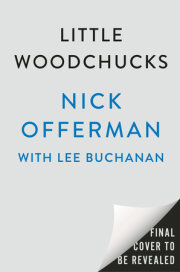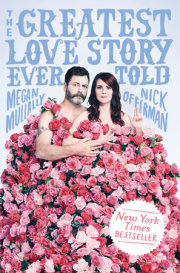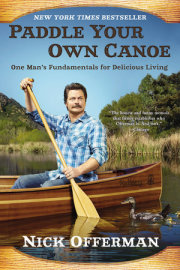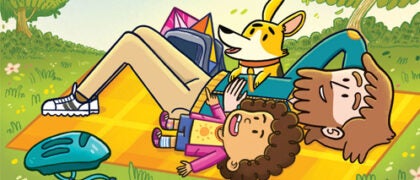Introduction
In many ways, the inception of this book occurred one score and five years ago, when I was working on a production of Sam Shepard’s Buried Child at Chicago’s excellent Steppenwolf Theatre Company. Back then, I had been well on my way to a comfortable life of blind materialism, hopefully emulating one of David Lee Roth’s insouciant, musical short films I had newly come to adore on a brilliant new cable channel, simply called—get this: Music Television. Little did I suspect that by the time that play had closed, the trajectory of my life would be forever altered.
Sam himself had come to town to do some rewriting and polishing on his script, even though it had won him a Pulitzer Prize back in 1979. I guess he didn’t entirely agree with the Pulitzer folks. That was certainly his prerogative, and I guess that’s what made him so damn handsome, I mean smart. The production was a pretty big deal, directed as it was by Steppenwolf founding member Gary Sinise, and starring some honest-to-god hotshots like Lois Smith, Ted Levine, Kellie Overbey, Ethan Hawke, and the late, great James Gammon. Gary, a legendary actor and director, also happens to be an awfully generous fellow, if you’re ever lucky enough to meet him—he always treated me quite equitably, even though the first time we met I was unaware his name was pronounced “Suh-neese,” and I said, “It’s nice to meet you, Mr. Sinus.”
Despite that initial gaffe, Gary hired me as an understudy for the show and also as a makeup artist, to apply old-age makeup to James Gammon every night, just by way of some stippling and painted modeling with highlights and shadows, nothing fancy. I had a scenery shop in the warehouse where I lived, or I guess to be accurate I should say I had a futon and a hotplate in the warehouse where I cohabitated with my table saw and my pin nailers. I had also previously made some props for Steppenwolf, including some masks for Alex and his Droogs in A Clockwork Orange, a play in which I also appeared and served as fight captain. All of which is to say, I was lucky as hell to be the jack-of-all-trades gofer kid running around the theatre the night Sam Shepard corralled me, slipped me $40, and told me to go get him a bottle of Maker’s Mark.
Now, I had gone to theatre school in Urbana-Champaign in the late eighties and early ’90s, which means that Sam Shepard was still the biggest rock star cowboy playwright in America (not to mention Chuck Yeager in The Right Stuff—heart-eyes emoji) when he sent me to get him a very specific handle of Kentucky straight bourbon, which means that I was high as a kite as I sprinted a block each in three different directions to score the bottle before realizing there was no liquor store within sprinting distance. Son of a bitch! I had been gone at least seven minutes, and I was beginning to panic—if I could but successfully score him this whisky, there’s no reason that it might not specifically fuel some innovative rewrites in rehearsal that night that could make the Pulitzer committee realize they had better take things up a notch and award Buried Child a first-ever second Pulitzer! Inspired, I finally streaked into the Argentinian restaurant on the corner and found a bartender to take pity on me. He fetched me the bottle, which I gingerly cradled as I cautiously high-stepped it back to the theatre.
In hindsight, acquiring intoxicants for your playwright before rehearsal begins is probably not ever a good idea. That fact began to dawn on me that very night shortly after I had deposited the Maker’s Mark at Sam’s seat in the audience, just before his significant other, Jessica Lange, arrived to join him. Her mood didn’t seem great, and there was some quiet but stern talking happening, and it dawned on me that maybe the reason he surreptitiously sent the gofer kid out for booze was because he wasn’t supposed to be having it. I honestly don’t know if that was the case, or how the evening played out between them, but I recall being painfully aware of the shift in tone the experience took: what had started out as a thrilling, personal, whisky-flavored interaction starring me and America’s greatest living playwright that left me breathless and blushing (I’m Sam Shepard’s Kentucky candy man!) ended with the banal reality of a (terrific-looking) middle-aged couple just doing their work and dealing with whatever individual circumstances they each brought to the table that night. My few years at Steppenwolf were invaluable for teaching me that, at the end of the day, every person puts their pants on just the same as me (even if these two people were packing some top-drawer buttocks into those britches), and it was just one in a lifelong string of reminders that the more I focused my attention on myself, the stupider I behaved; and the more I focused on others, the likelier I was to be of actual service, because I could then apprehend the work that needing doing.
That was a good lesson, as I began to see the world a tiny bit more clearly. As it turns out, that was just the appetizer to a much meatier main course, because that 1995 play in Chicago was also the juncture at my life in which somebody first gave me some Wendell Berry stories. That “somebody” was Leo Burmester, a dearly departed, larger-than-life Kentucky actor who was also in the show and could apparently smell the hay on me, or at least a waft of manure, and, recognizing a kindred spirit, he changed my life with his gesture. The spirit running through Mr. Berry’s writing, a farming and life philosophy I would come to know as “agrarian,” appealed to my core and curiosity in a way that has not yet abated. Agrarianism promotes an egalitarian agriculture based on morally sound land use. Slow down, please, and read that last sentence again. Have you ever read a sentence even half that boring?
As a person who makes his living creating popular culture of one sort or another, I can absolutely admit to the absence of pizzazz in this topic. “This is terrible television!,” my inner mountebank barks, as I notice that I am nonetheless unable to look away from it. The marrow of Wendell Berry’s writing managed to reach something in my own bones; some deep truth that was not put there by me but by my excellent mother and father, because I recognized that they were agrarian also. They had grown up on farms a few miles from each other, and the seeds of their quiet, steady lessons of thrift, service, and decency had been expertly planted in me and my siblings, but mine didn’t truly begin to flower until my emergence from boyhood at age twenty-five, when the sprouting seeds were watered with Mr. Berry’s vision, and I have been completely screwed ever since, goddamn my eyes.
I would never be that innocent MTV-lover again. As if for the first time, I could see clearly the folly in the shiny materialism I had so adored, and the folly in us humans as well, me, first and foremost. The plenteous, golden tresses cascading down Mr. Lee Roth’s bright red leotard would never ensnare my fascination again. Ever since that epiphany, with my limited cognitive capacity, I have instead been able to periodically glimpse the ways in which we industriously sell to one another our own demise. One of the most pernicious ways in which we do that is by pretending and convincing one another that the planet’s resources are unlimited, and that we don’t need to worry about the concerns of agrarians, because they are old-fashioned and certainly not cool.
Eventually, I befriended the Berry family and have endeavored to do my small part in supporting their work, that of stolidly sounding the alarm for some decades now, to draw our attention back to the land by which we are inescapably supported, and the neglected farm families who steward that land. This cause was lovingly detailed in a documentary by Laura Dunn I helped to produce, appropriately entitled Look & See. A few years ago, I had the substantial pleasure of introducing my parents to the Berry clan at the lunch table of Berry daughter, Mary, who should frankly be elected to as high an agricultural post as we can vault her. You’ll hear a bit more about her later, but for now it’s important to know that the following ceremony occurred as we partook of her delectable brown sugar pie:
The round oak table was peopled by Mary and her exemplary farmer husband, Steve Smith; Wendell; his winning bride, Tanya; and my mom and dad, or more importantly, four farmers and a retired nurse and a retired schoolteacher. They were kindly indulging the lunch’s only trained juggler (me) as I described an idea for a new book about our population’s general lack of any intimate knowledge of nature; a book that would hopefully add to the various, disparate voices reminding people that if you like to eat food, then you had best begin to give a shit about our farmers and our agriculture.
Wendell had pushed his chair back from the table and crossed his legs, having finished his pie with fresh whipped cream. He leveled his gaze at me and said, “Look. Examine the ‘conservation’ of ‘nature,’ not through the lens of John Muir, which is how everybody looks at it, but instead through the lens of Aldo Leopold.”
I swallowed audibly and nodded confidently, having no idea what the fudge he meant. “Mm. That’s great,” I replied cluelessly, taken aback at this unexpected turn our dessert course had taken. Sure, I suppose I mentioned the book in the hopes of winning some small approbation from him, but I never could have dreamed that I would finish that lunch having been tasked with a riddle-wrapped quest by my favorite wizard-poet.
Far be it from me to shirk my chores, so I set my investigation in motion. My journey took on a few different guises, as I perambulated all over a whole bunch of nature, dovetailing Wendell’s challenge into my perpetual search for the way to find nuance in every situation I can, even the ones that seem the most enraging and controversial. My tasks involved the making of mistakes, then discovering how to resolve those errors without being an asshole, a search that I now understand will never end.
There were some pretty damn charming companions in my travels, including my bromance brothers Jeff Tweedy and George Saunders, with whom I hiked Glacier National Park; James Rebanks and his redoubtable family, who showed me how beautiful farming life can be in the hills of Cumbria; and of course my own bride, Megan Mullally; our dog Clover; and our Airstream, “the Nutmeg,” all of whom you’ll meet shortly. Without them all I could never have put together the following pages. I thank all of them very kindly, and I’ll thank you, dear reader, for making it to at least the end of the introduction.
Copyright © 2021 by Nick Offerman. All rights reserved. No part of this excerpt may be reproduced or reprinted without permission in writing from the publisher.













